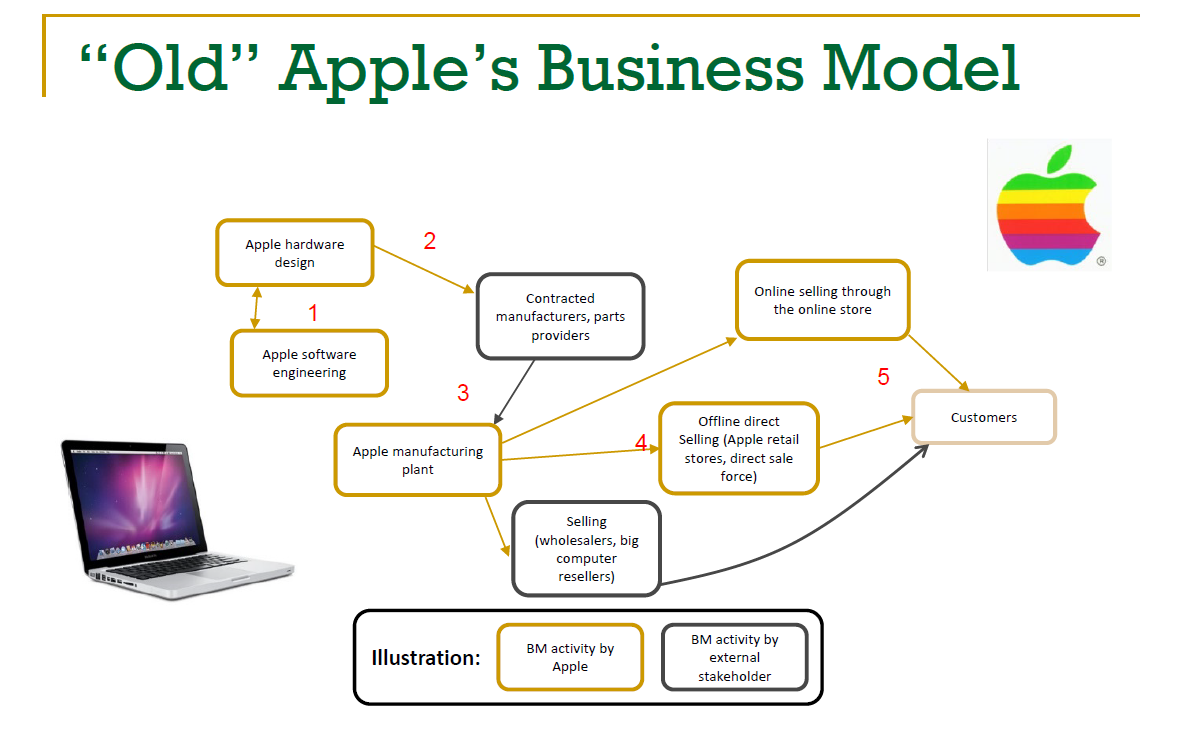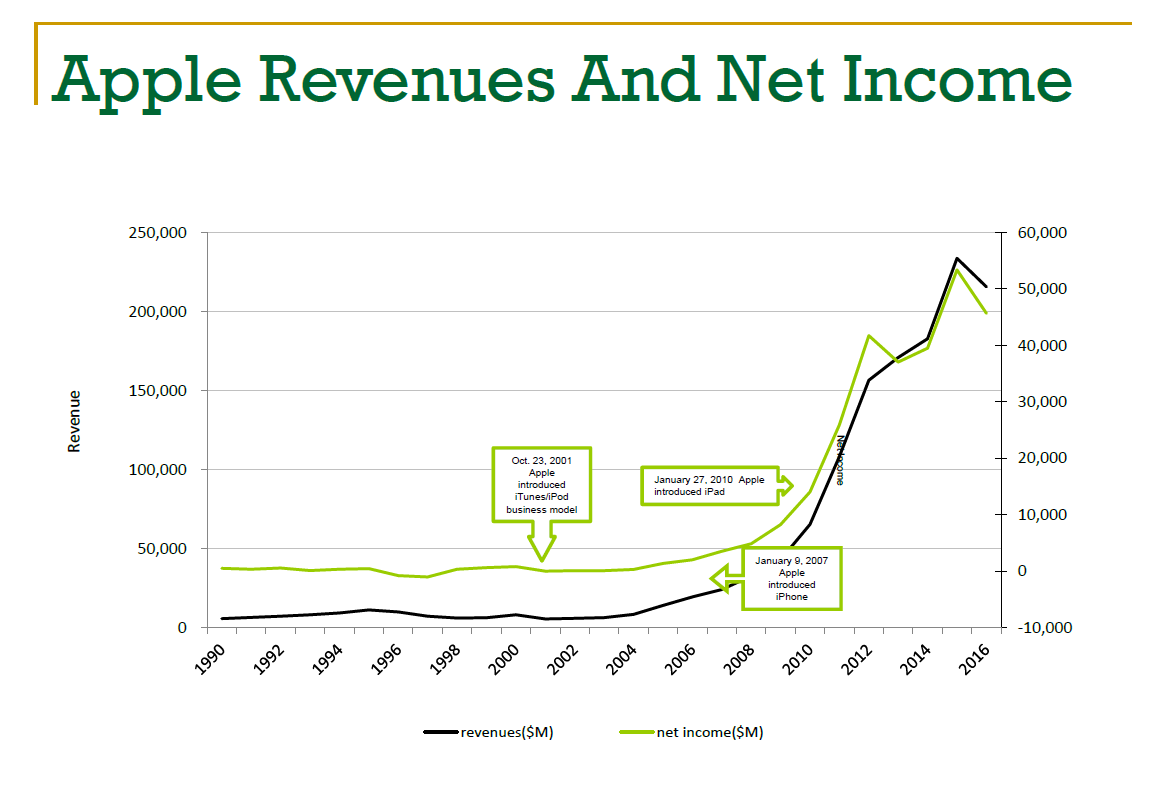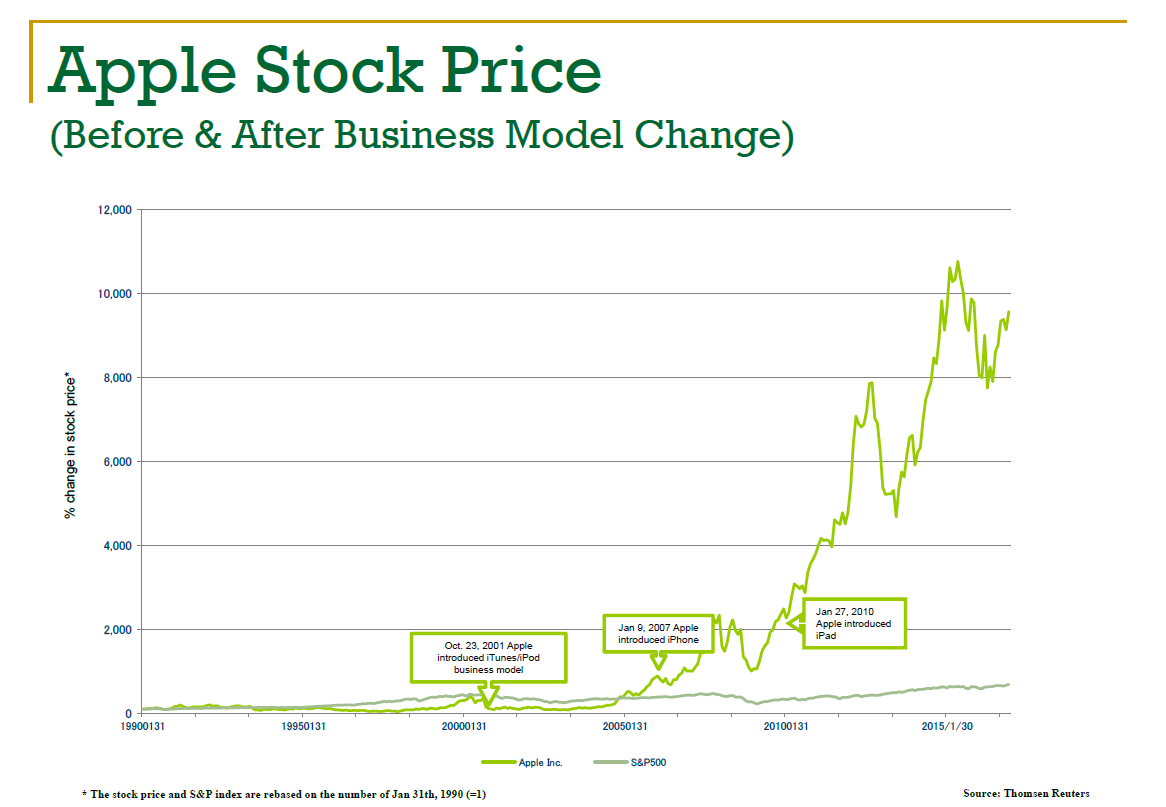Consumers have greeted Apple’s latest slate of iPhones, computers and the newest connected Watch with solid interest, but not the high enthusiasm from years past. Since the iPhone’s debut in 2007, public excitement soared in the early years but then has steadily dipped as the novelty wore off. According to Statista, global search interest for iPhones has been falling since 2012, after peaking with the iPhone 5. Citi analysts also noticed the same shift over time: “We suspect this is because of a slowdown in innovation and the saturation of iPhone in the addressable market.”
Is Apple falling behind on innovation compared to other tech giants such as Amazon, Google, Tesla and a revived Microsoft? At an event in Brooklyn this week, the company unveiled revamped versions of the iPad Pro, Mac Mini and MacBook Air, including what it’s calling the biggest refresh of its signature tablet since it was introduced eight years ago. But people point to the merely incremental changes made on iPhones and the late introduction of a connected watch — after Google and Samsung already launched theirs — as signs that Apple is no longer the innovation leader. And yet as skepticism lingered, Wall Street went the opposite direction by making Apple the first company in the world to be worth $1 trillion. How can a company supposedly losing its innovation edge get such a high valuation?
The answer is that Apple remains innovative today, according to Wharton experts, and any doubts about it stem from a limited understanding of what innovation entails. Wharton management professor Paul Nary said it is important to distinguish between invention and innovation. Invention is the creation of a new idea or opportunity while innovation “generally means a successful commercialization of a new technology or a new business model, usually by recombining it with other pre-existing elements, and making the possibility, stemming from the invention, into a market reality.” From this viewpoint, he said, Apple is innovative.
“It has been generally more successful than many of its rivals in incorporating novel features and technological solutions in its products while making them very attractive to a broad set of customers,” said Nary, an expert in technology and innovation management. “Apple’s competitors may argue and claim that they were the first to introduce this or that feature, or to invent it, but that doesn’t change the fact that Apple was often the one to commercialize it with the greatest degree of success.”
By this measure, tech giants such as Google and Facebook can be seen as similarly innovative, despite not having invented their core products. “Facebook was not the first social media website and Google was not the first search engine,” Nary said. “The open secret of the tech industry is that none of the tech giants are actually inventive or even innovative enough on their own to keep up with the demands of their own growth. In order to innovate, these firms aggregate and integrate inventiveness and innovative efforts of other organizations. This is not because there aren’t enough inventors, creatives and new ideas inside firms like Google and Apple, but rather because of the sheer complexity and interdependence of modern technological ecosystems.”
For an iPhone to function properly, for example, it needs many components and technologies provided by Apple’s suppliers to work well, Nary said. Also, complementary products and services such as social media apps and accessories need to work in harmony to bring about a good user experience. “All of the innovative efforts of Apple or Google or Amazon would be useless without those of other firms within their respective ecosystems,” he noted. “What companies like Apple have to do is to continuously shepherd and harvest technologies, products and capabilities that they may need from other firms,” often through acquisitions.
“The open secret of the tech industry is that none of the tech giants are actually inventive or even innovative enough on their own to keep up with the demands of their own growth.” –Paul Nary
Saikat Chaudhuri, executive director of the Mack Institute for Innovation Management, added that it is important to put things in perspective. “No successful company that we’ve seen throughout history has been able to come out with revolutionary, category-creating products every few years,” he said. “Rather, the key to sustainable success over time is to balance incremental innovation that leverages existing products with investing in revolutionary innovations that periodically disrupt the market. In the process, a firm needs to keep adapting and transforming itself, which includes shedding businesses that may have been cash cows in the past or even tied to its origin.”
‘Old’ Apple vs. ‘New’ Apple
Wharton management professor Raffi Amit defines innovation as the introduction of a product, process or business model that is new to the market where it operates. “Apple has been an innovator not just in introducing novel products to the market, but in addition it has innovated the way it does business — in a profound way that has affected its revenue, its profits and its market capitalization.” What separates Apple from its rivals is that it innovated both its devices and its business model.
For example, in Apple’s old business model, it designed the hardware, software and contracted with manufacturers to make the products. Apple sold the gadgets online or through retail stores and they also sold wholesale as a computer reseller. “They contracted some things out; some things they did themselves and sold [the products], and basically that was it,” Amit said.
 Copyright Raffi Amit
Copyright Raffi Amit
But with the introduction of the iPod music player, Apple innovated its business model as well. Former Apple CEO Steve Jobs convinced the record labels to allow sales of individual songs on iTunes, not just by the album. “That really was the beginning of a revolutionized business model,” Amit said. “Every time [consumers] downloaded songs, Apple made money. The innovation here is they made money not just by selling the device, but now they started making money by the usage of the device.”
To be sure, Apple wasn’t the first to use this business model. For example, Gillette sells razors cheaply and makes money on the blades, which are expensive, Amit said. Apple sold an expensive device but charges low prices for songs. But it sold a lot of songs. Apple did the same thing with movies. Then with the introduction of the iPhone, iPad and the app store, the company made money on device sales and also on the apps themselves.
The impact of this change in business model by Apple has been dramatic. “For many, many years, the revenue and the profit were pretty constant,” Amit said. After the business model change, revenue and profits jumped.
Apple’s stock price also took a similarly big leap. Amit compares Apple’s phenomenal share performance to that of rival HTC, a Taiwanese handheld device maker. “HTC is very innovative. It produces fantastic products, but it did not innovate the business model,” he said. As a result, HTC’s stock price growth is flattish while Apple’s is explosive. The point is that “it’s not just about innovating the product,” Amit said, “but more importantly it’s to innovate the business model side by side with the product.”
 Copyright Raffi Amit
Copyright Raffi Amit

Copyright Raffi Amit
Creative Imitation
Martin Ihrig, adjunct management professor at Wharton, looks at innovation through three lenses: customer-driven innovation, knowledge assets or strategic knowledge management, and planning under uncertainty. An example of customer-driven innovation is a drug company — after realizing that it’s getting harder to churn out blockbuster drugs and with generics eating into its business — that decides to meet the needs of its stakeholders by branching into other health products and areas. “It’s not only just about selling pills, but there are so many other [ways that] pharmaceutical companies can help people become healthier,” he said.
Knowledge assets are such things as patents and copyrights, as well as the experience of key employees, Ihrig said. Leveraging them can lead to innovative activities. Finally, planning under uncertainty means innovating for the future, which could include moonshot projects that could later become feasible such as driverless cars. “You don’t know what’s going to be next. It’s really coming up with little experiments where you invest a little bit of money and see what the outcome is.”
Apple is an expert in the first two lenses of innovation. “They deeply understood the customer and they deeply understood the ecosystem,” noted Ihrig, who teaches strategy, entrepreneurship and innovation. Apple takes great care in providing customers a good experience — from downloading the content to ease of use on its devices. “It is really important for companies these days to see the journey of a customer, not only to help them with one little thing, but also with an entire solution.”
Importantly, Ihrig said, a company doesn’t have to be the first with a product or service to be innovative. They can use what he calls “creative imitation.” “You take something that already exists, but you adapt it and further develop it and implement it in a context where it hasn’t been [used] before.” That’s not the same as being a pure copycat. “What Apple is doing is looking at what works and integrating it into its ecosystem.” So even if rivals like Samsung come out first with new phone features, Apple can stay ahead. “You don’t have to be the first to do a 1,000-meter waterproof cell phone,” he said. “You just have to see what the customer wants and what’s technically feasible.”
Insurmountable Network Effects?
Amazon and Google also are innovators, but in different ways. Amazon has transformed itself from an online bookseller to one that sells groceries, electronic gadgets, movies and other merchandise, and it also provides cloud services and operates retail stores. “In terms of technical and business model innovation, Amazon is really out there,” Ihrig said. As for Google, not only is it innovative, but it also can draw on network effects to stay on top. With network effects, the more people use a product or service, the more useful it becomes. Google came out with a better search engine that attracted more users and advertisers. As Google gained users, its search engine became more valuable — making it tougher for rivals to overtake it.
“Apple has been an innovator not just in introducing novel products to the market, but in addition it has innovated the way it does business — in a profound way that has affected its revenue, its profits and its market capitalization.” –Raffi Amit
Apple’s iTunes and the app store give it the network effect. The more people use the apps, the more developers are attracted to the operating system, which results in more apps being created and more users. Google also did the same with its Android play store. This network effect of Apple means it likely won’t go the way of the BlackBerry or Nokia, once the kings of mobile phones. “Apple is in a position that is very different in that they have built a whole ecosystem that is very powerful,” Ihrig said. “They’re much more networked than Nokia or BlackBerry ever were.”
Wharton management professor Anoop Menon said Apple also has an edge in two areas that give it a “significant innovative advantage.” One is inroads into wearables with the Apple Watch. “This could dovetail nicely with its big push into the burgeoning Internet of Things (IoT) domain — for example, its HomeKit — and open up a whole new space of innovative products that fit well with its well-known capability of delivering great design.” Second, Apple is known for its strong stand on privacy. “Data privacy is fast becoming one of the central issues of the modern economy, and governments are scrambling to draft adequate responses to privacy breaches.” As Apple pushes into wearables and IoT, its strong privacy image will boost business. “These two directions of innovation can be seen as being quite synergistic.”
Horizon 1, 2 or 3
Wharton professor Christian Terwiesch, who is also co-director of the Mack Institute for Innovation Management, defines innovation as a “novel match between a solution and a need that creates value.” He categorizes innovation activities into three levels — Horizon 1, 2 or 3. Horizon 1 activities are those in which a company uses existing technology to cater to current customers. For example, the iPhone model goes from 7 to 8, the Apple Watch from version 3 to 4. It also can refer to process improvements, such as Apple fine-tuning store operations or manufacturing (through China’s Foxconn) to get costs down. “They are incremental innovations, but they’re very important,” he said.
Think about BMW coming out with new Series 3 vehicles every few years, or Google constantly refining its search algorithms, or Budweiser coming up with a beer with lemon. “We’re not flying to the moon; we’re not going from regular combustion engine to a Tesla, but these Horizon 1 innovations are the bread and butter of every firm,” Terwiesch said. “If we don’t do those, we’re just not going to stay in business.”
Horizon 2 activities are those in which a company uses new technology to potentially go to new markets. An example would be Apple going from the iPod (music), to the iPhone (phone) to iPad (tablets) and Watch (timepieces, fitness). “It’s not more of the existing [product line],” Terwiesch said. “It’s something where you sit together with the product development team, and in two to three years you create a new product line.”
Moonshots and Beyond
Horizon 3 innovations are the truly revolutionary, such as the first time someone invented the technology behind the mobile phone. At the beginning, though, many Horizon 3 efforts fail. “These are technologies that were in the lab … that never saw the light of day because they turned out not to be feasible,” Terwiesch said. So when Apple launched the iPhone in 2007, it was a Horizon 2 innovation because it did not invent the mobile phone technology. Apple then maintained the product line through Horizon 1 activities — releasing a new model yearly.
“It’s a lot easier to be innovative when you have unlimited money. Google lays a golden egg every morning.” –Christian Terwiesch
Horizon 3 activities are typically relegated to the research center of a company, such as Google’s X, which works on moonshot products. Its Project Loon, for example, seeks to broaden a cell tower’s range by putting antennas in stratospheric balloons that expand the coverage area. Google had to design a balloon that could last more than 100 days even in inclement weather. It also built an autolauncher that could shoot these special balloons high up into the stratosphere, above airplanes and birds.
While revolutionary innovations can pay off, “we typically caution [companies] not to do too much in Horizon 3,” Terwiesch said. One reason is that the track record of success isn’t great. Most incumbents usually aren’t skilled in coming up with moonshots, especially if these projects can threaten their existing businesses. “It’s very hard to do internally,” he said. “Think about the birth of Tesla. Tesla didn’t come out of General Motors. Tesla came out of a startup.” So Horizon 3 projects are best in startups backed by venture capitalists who know they’re placing wild bets. It only takes one big win, say spotting the next Facebook, to get their money back.
Google — like Apple, Amazon and other deep-pocketed tech giants — is in a unique position to engage in Horizon 3 activities. “It’s a lot easier to be innovative when you have unlimited money,” Terwiesch said. “Google lays a golden egg every morning.” The amount of money it makes on search, he noted, lets Google spend even just 1% of revenue to make a serious run on moonshots. Apple’s gigantic profits from the iPhone give it the same financial gun powder, Terwiesch added.
But whether or not Horizon 3 projects succeed, they bring other benefits. One is recruiting power. “It’s very hard to go out to Stanford or Penn or Wharton and say, ‘Hey guys, help us make the search engine 1% more efficient so we can basically make more money on advertising,” Terwiesch said. “But if you tell people you are building a car that can fly to the moon and back … that creates the buzz to hire the best and the brightest,” even though many realistically will end up working on more routine Horizon 1 activities like improving search algorithms.
Another Horizon 3 benefit is what Terwiesch said his colleague Wharton professor Dan Levinthal calls “absorptive capacity.” That means a company can engage in Horizon 3 projects not just for the purpose of eventually commercializing these products, but also to learn from them. So when they see a startup working on the same moonshots, they are better able to judge whether it would be a good acquisition or not, Terwiesch said.
So when Apple’s critics lament that the tech giant is merely doing Horizon 1 and 2-type changes to its products, that doesn’t mean the company is lagging behind in innovation. “Apple was the first company to be worth $1 trillion in the world,” Amit said. “Do you think investors are stupid? I don’t think so. Why would investors value Apple at $1 trillion if they think it is dead meat? … I, by no means, would write off Apple as an innovative company.”



